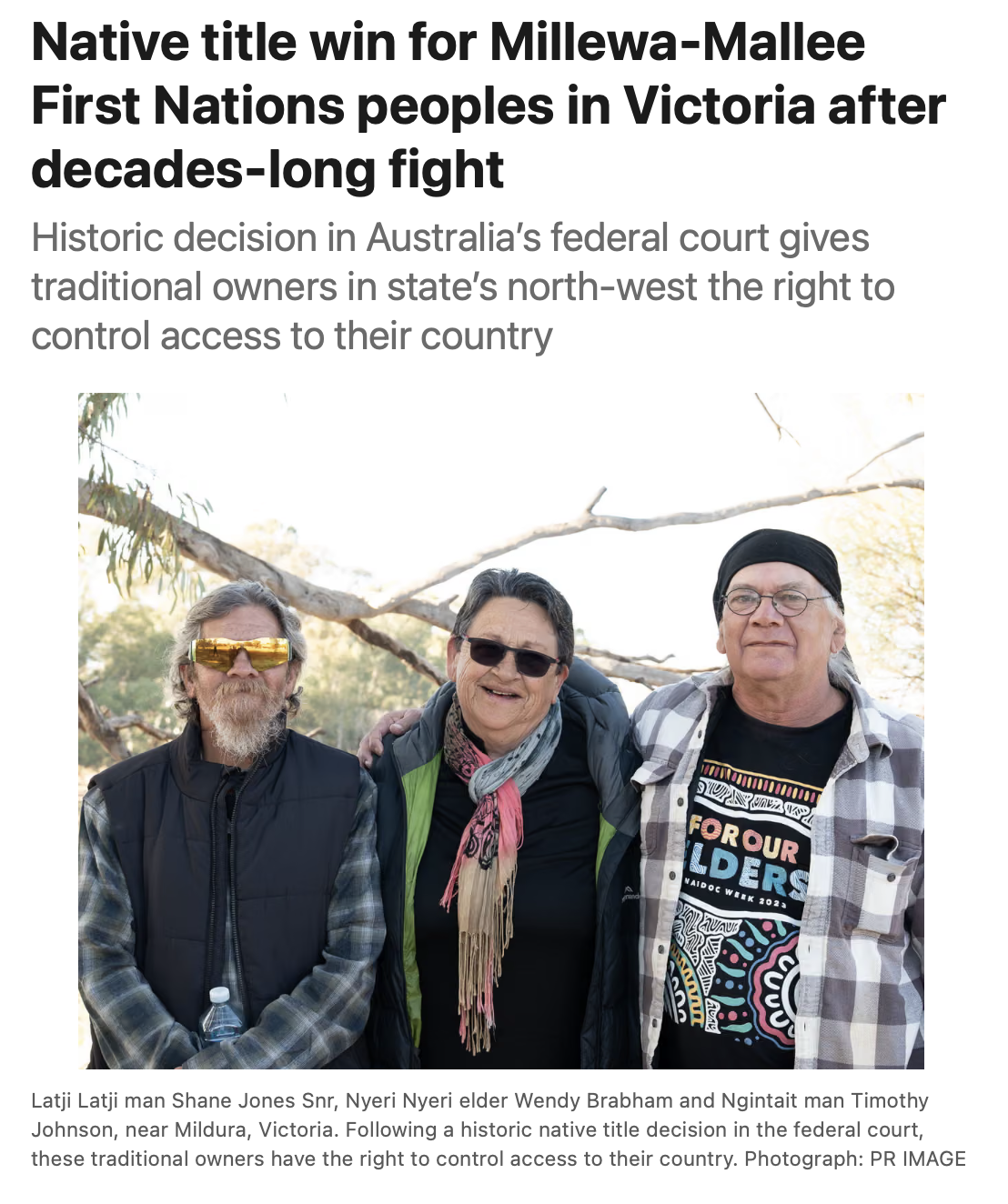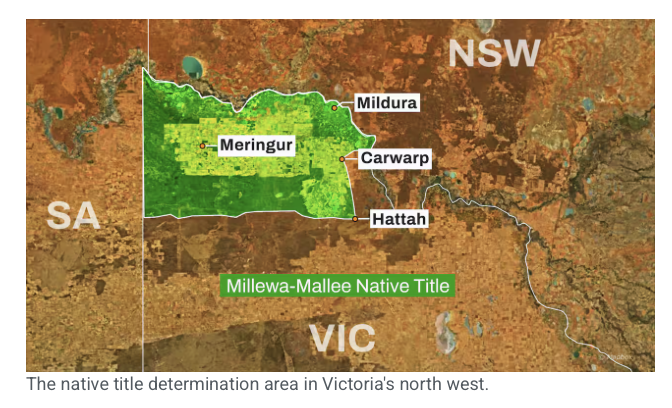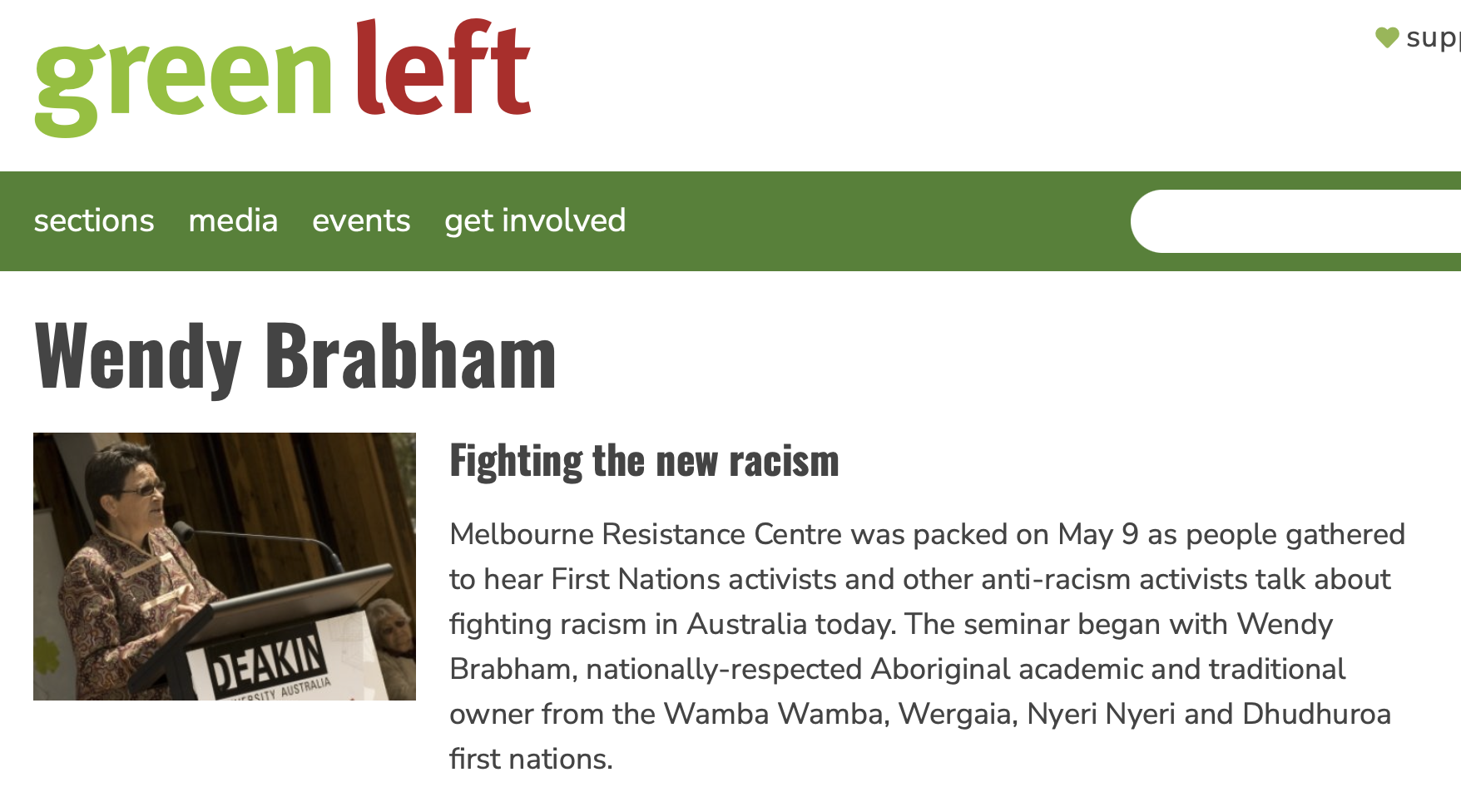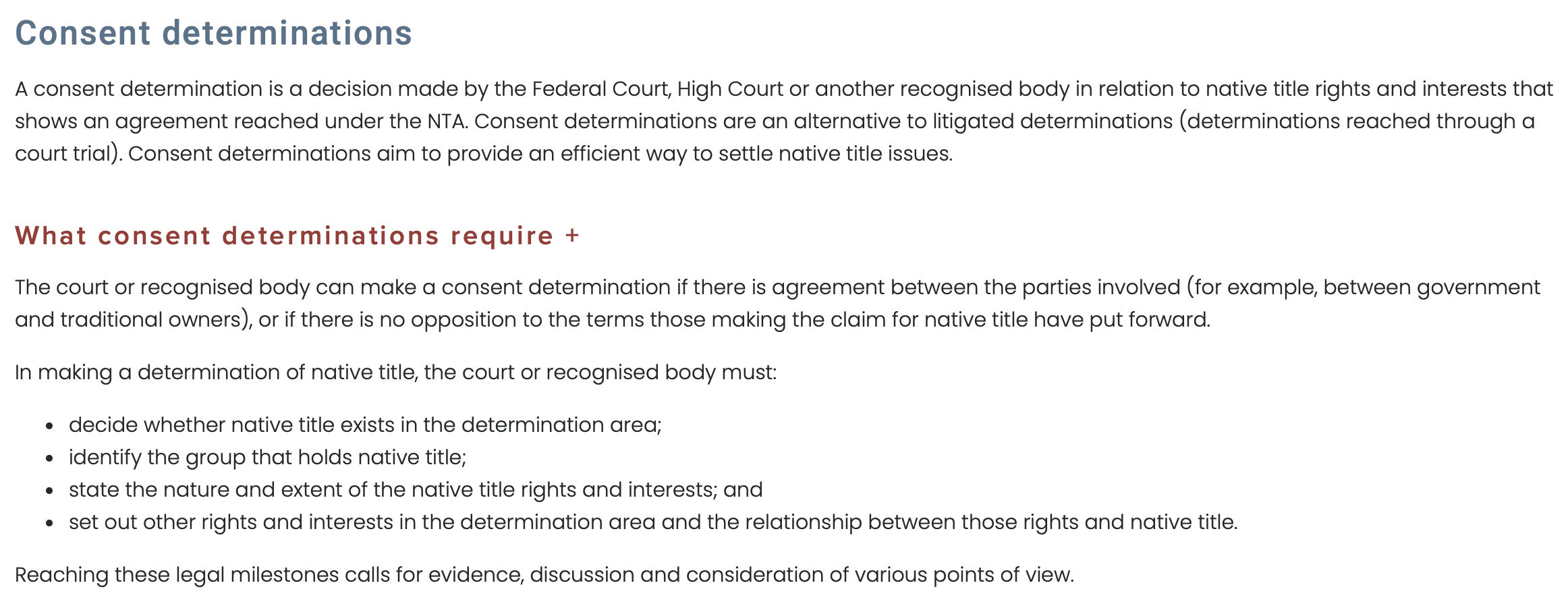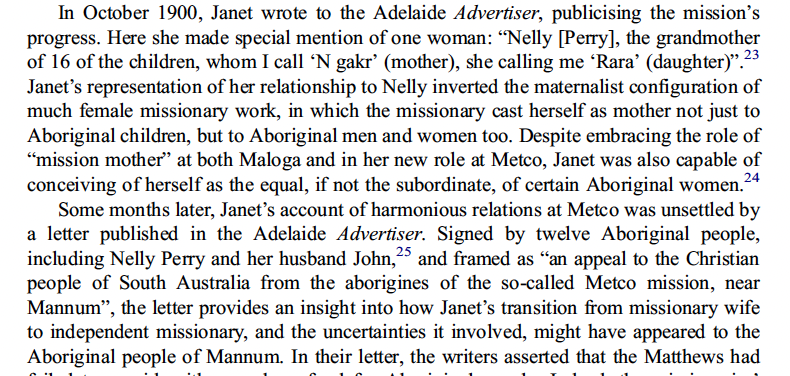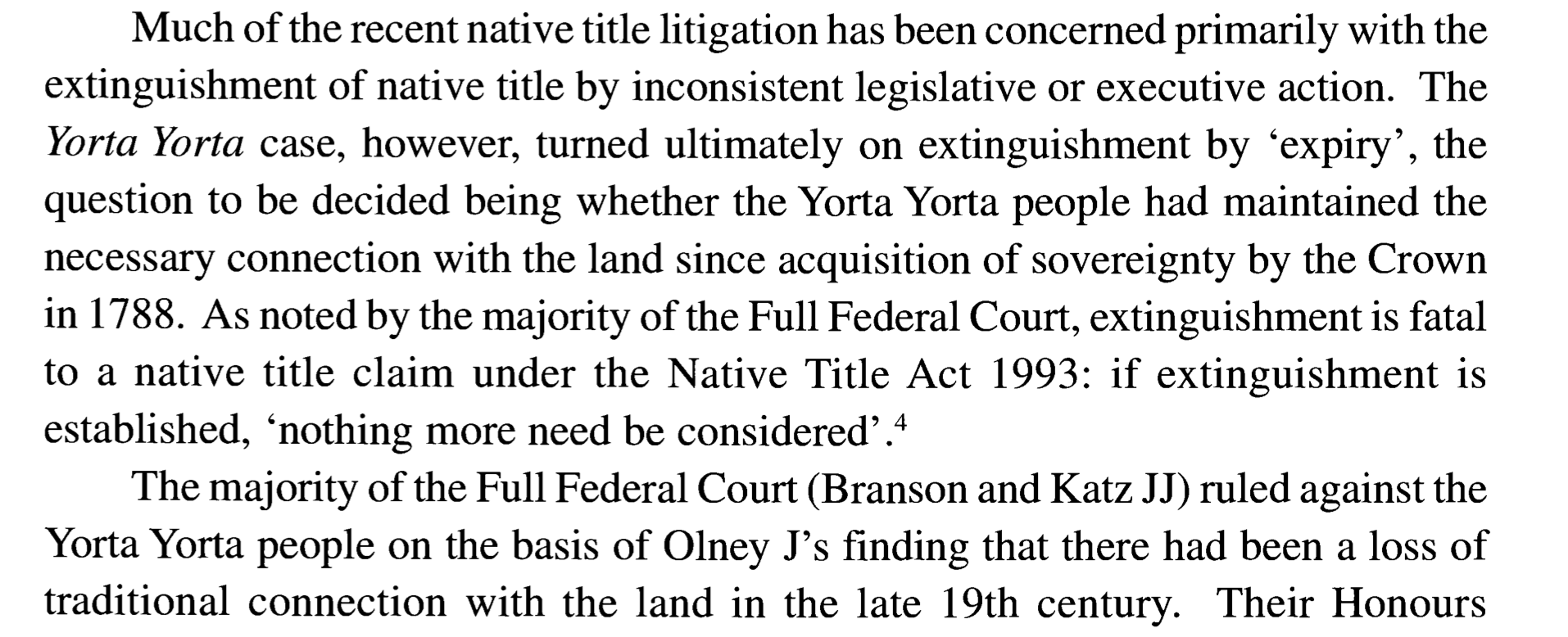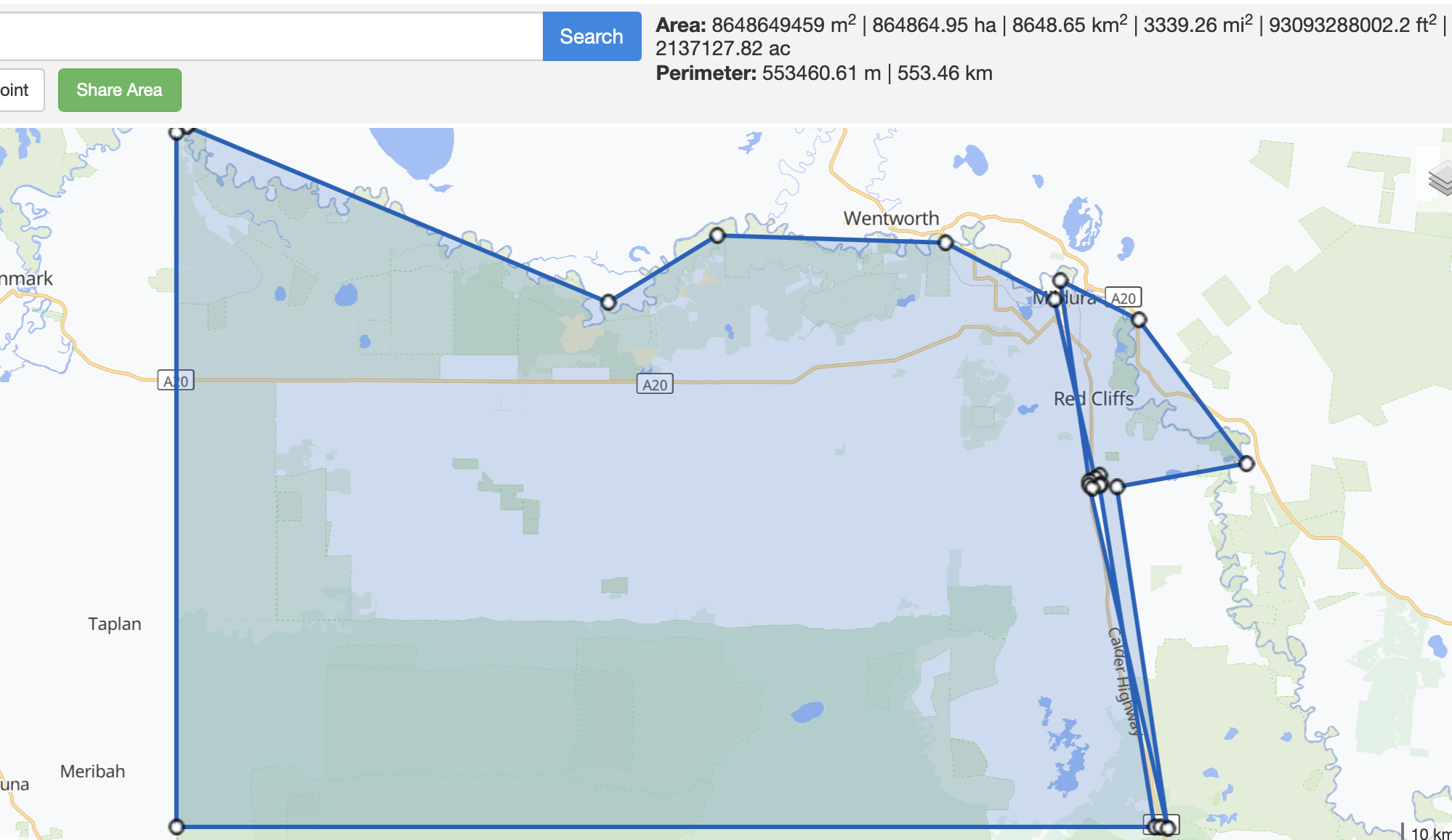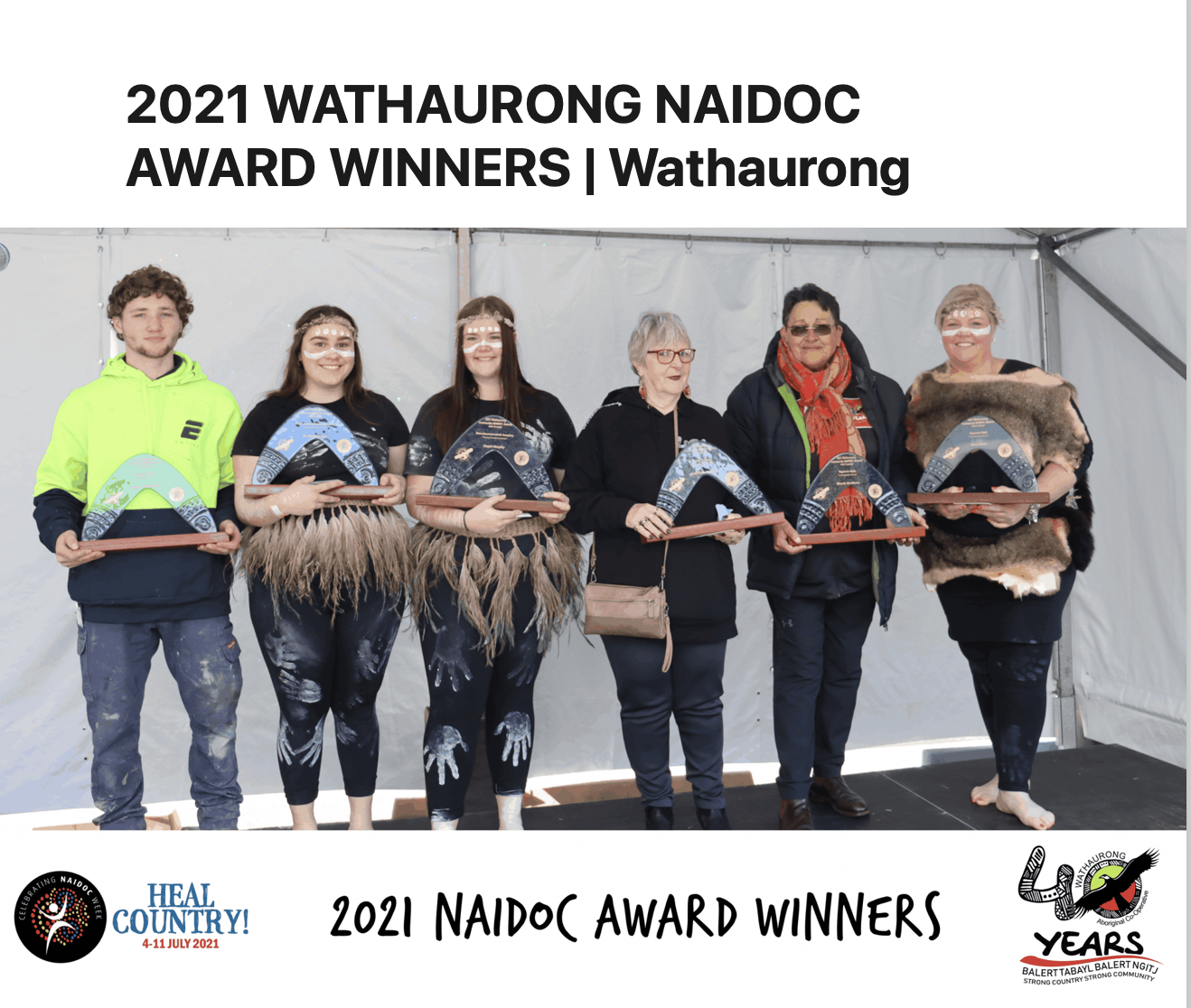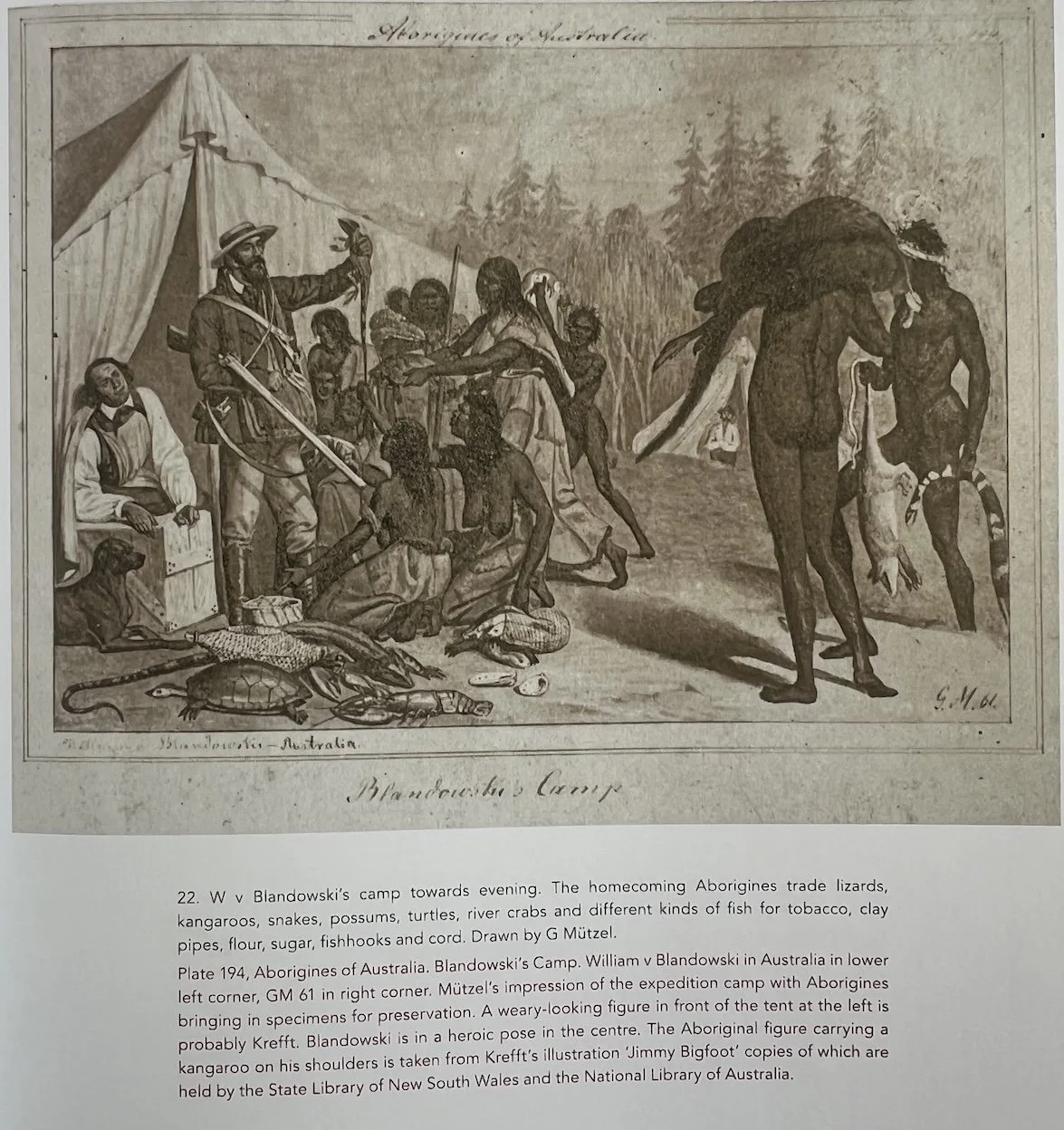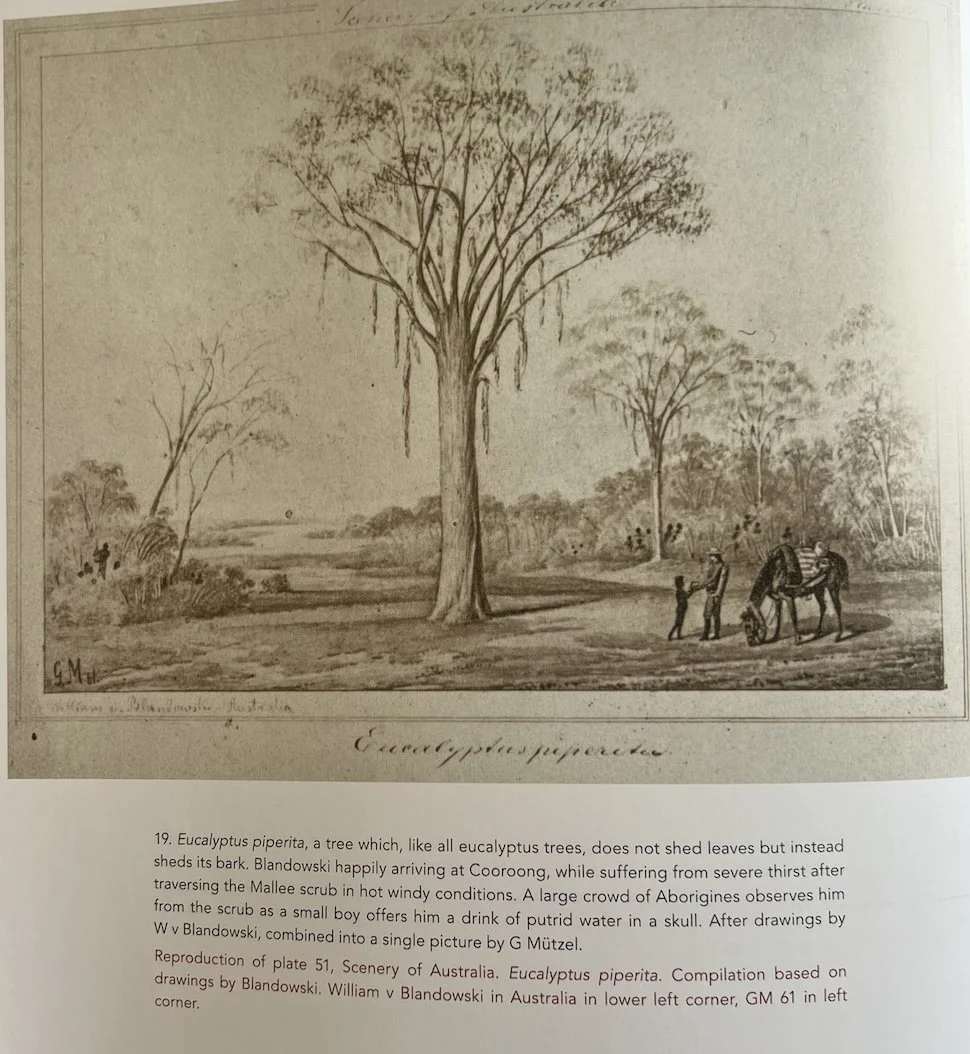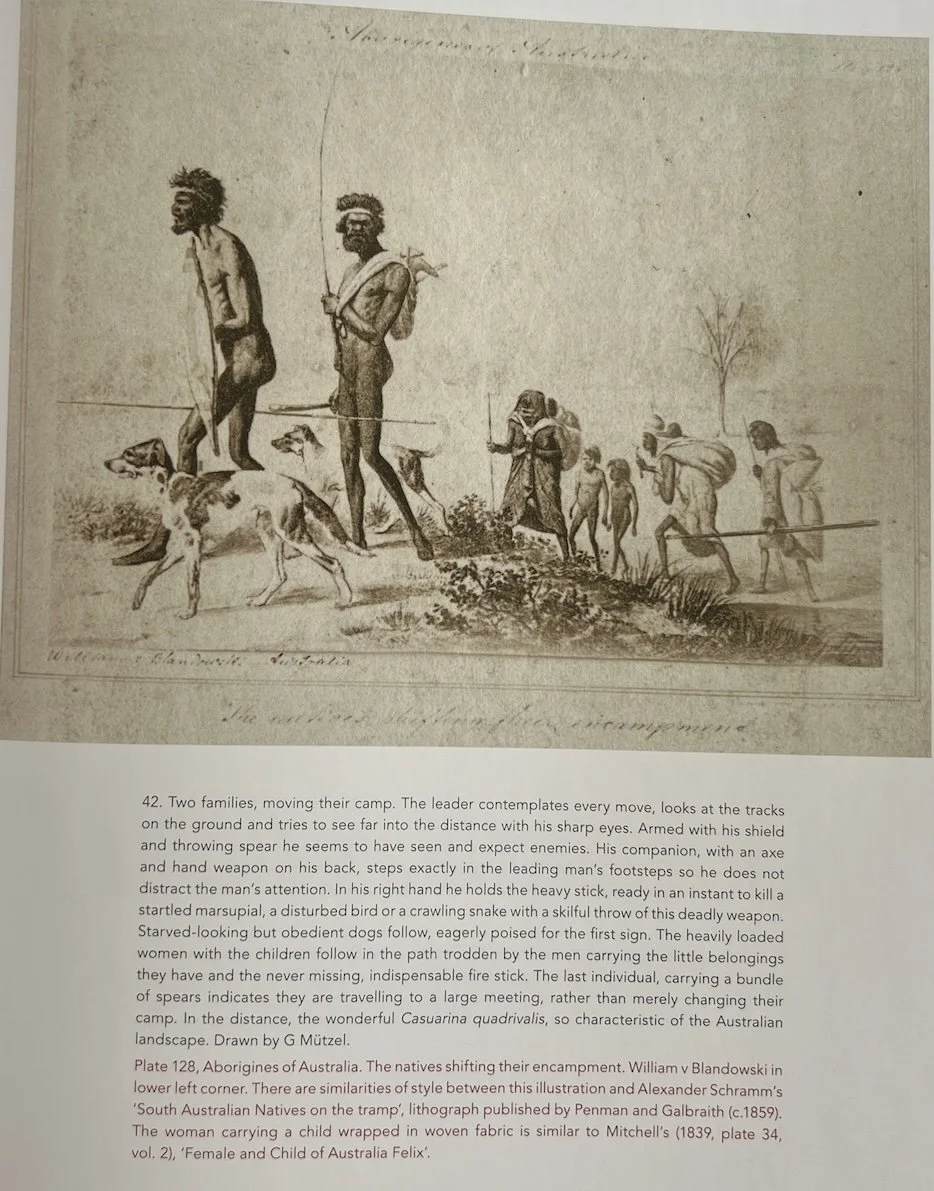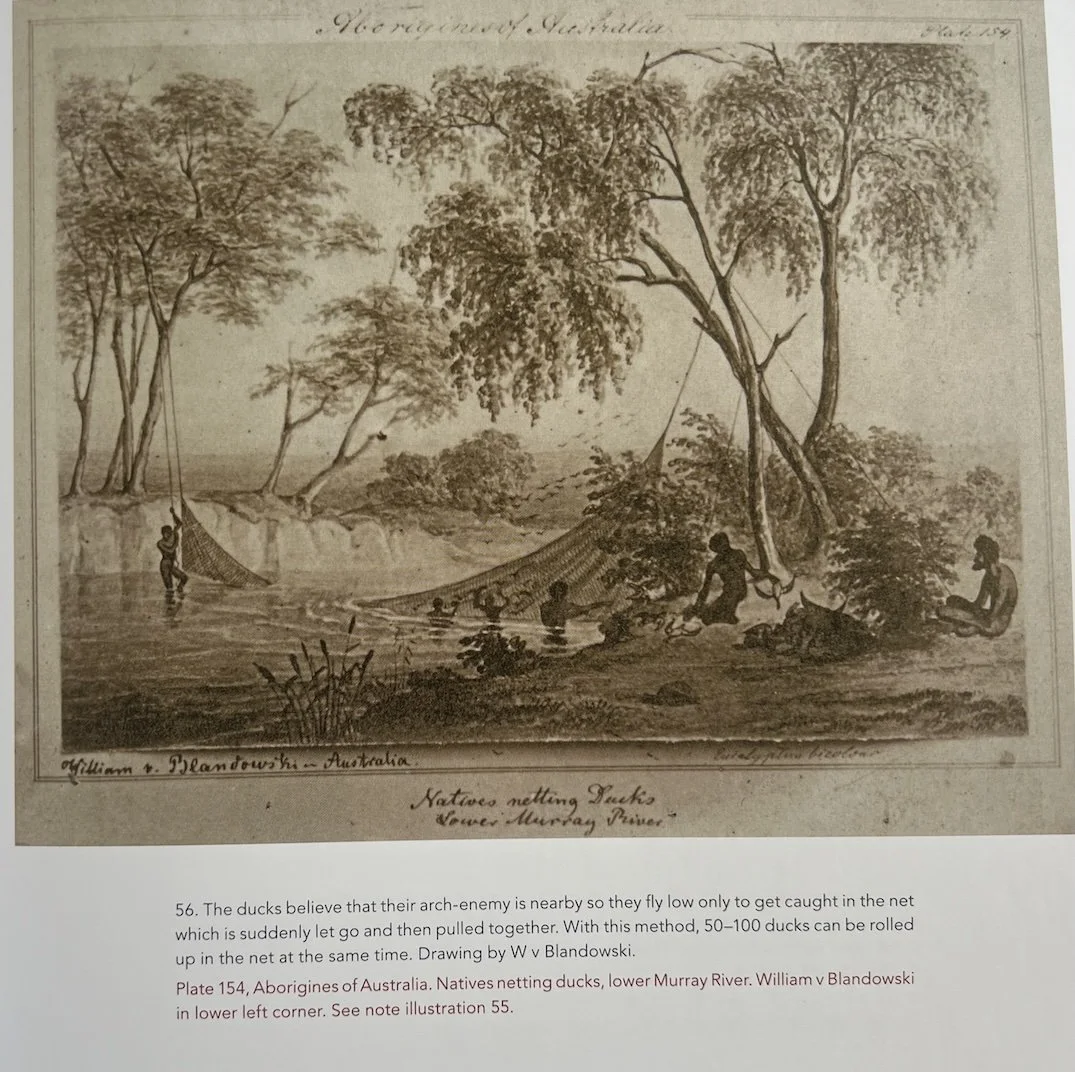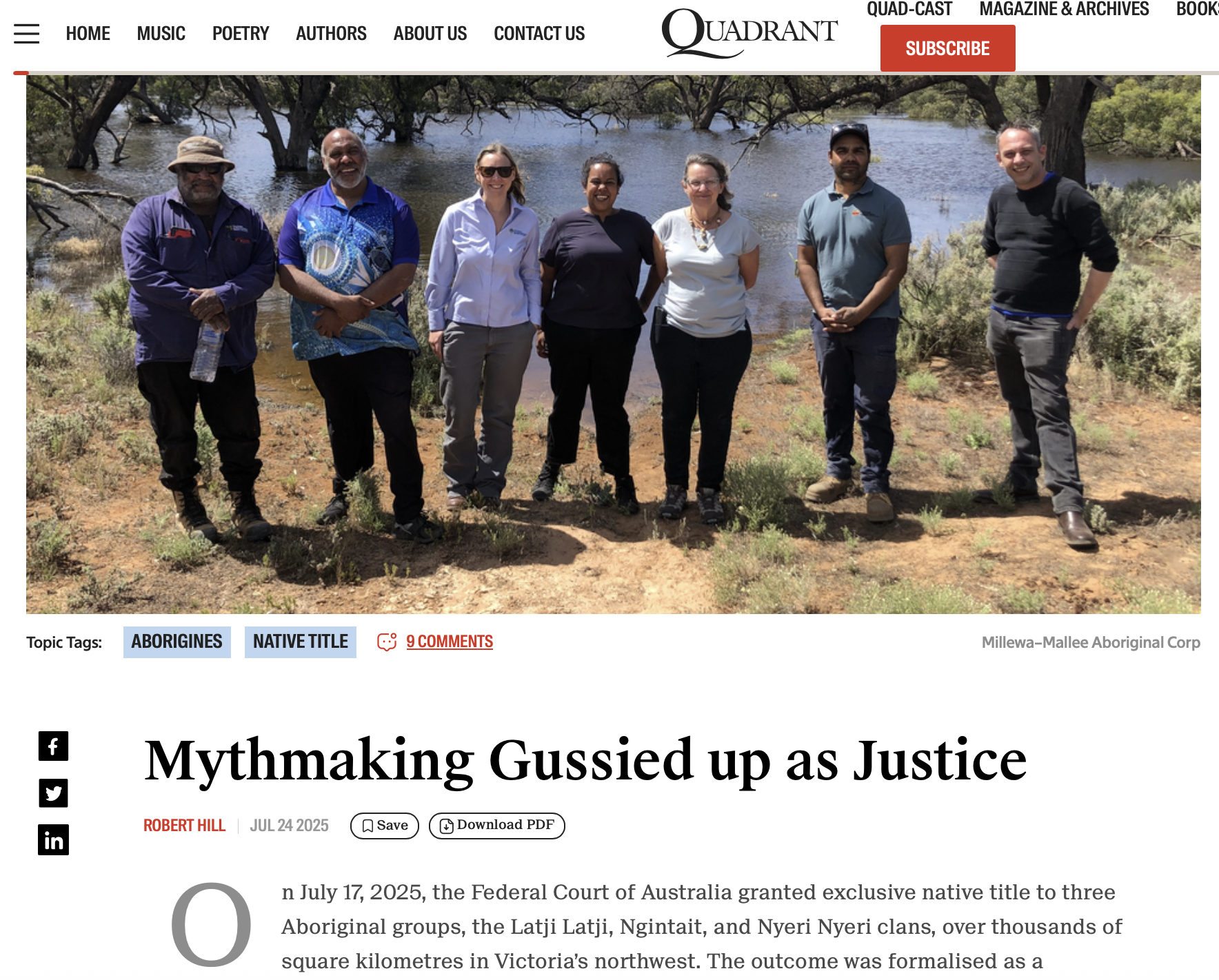Giving away Victoria in an Age of Consent
An historic native title determination has seen exclusive native title rights granted to three Traditional Owner groups in north-west Victoria.
The Latji Latji, Ngintait and Nyeri Nyeri peoples celebrated the end of a decades-long fight on Friday with a Federal Court ruling that their application for native title, formally lodged in 2015, was valid. [SBS]
This post contains a collection publicly available reports and comments related to the recent succesful granting of exclusive native title in NW Victoria to the Millewa-Mallee First Nations peoples.
The determination was on the basis of consent - that is, no opposition to the demands of the Aboriginal claimants was presented in court. The Labor State Government of Victoria just consented to the demands of the claimants and a mutually agreeable agreement was signed, sealed and delivered by the Federal Court’s Justice Bennett. [See Notes below for a bio on Justice Elizabeth Bennett]
The granting of exclusive native title is a surprise to many given that previously Aboriginal claimants needed to demonstrate conclusively in a court (Federal or higher) that they had maintained a, “real observance or acknowledgement of traditional law and custom” over the lands they were claiming. (Figure 13 below)
For example, in the failed Yorta Yorta native title claim in Victoria, the court found that the case,
…turned ultimately on extinguishment by 'expiry'…the majority of the Full Federal Court ruled against the Yorta Yorta people on the basis of…finding that there had been a loss of traditional connection with the land in the late 19th century. (See Figure 14 below)
This failure in the Yorta Yorta case was immortalised in Justice Olney’s borrowing of Brennan J’s (in)famous Mabo “tide of history” terminology (Figures 1 and 13):
Figure 1 - “…the tide of history has washed away any real acknowledgement of tradition…”Source
1 - Were the Applicants Really “Traditional Owners” with a Continuing Connection to their Land and Customs in a Real Meaningful Way?
Given the failure of the Yorta Yorta case, which was contested in a court, it is a surprise that one of the successful claimants in the recent Millewa-Mallee Native Title case is a woman claiming to be an Aboriginal from the Nyeri Nyeri tribe, amongst several others. “Auntie” Wendy Brabham (centre Figure 2) claims to be a traditional owner from four First Nations - the Wamba Wamba, Wergaia, Nyeri Nyeri and Dhudhuroa.
This is surprising with respect to the findings in the Yorta Yorta case because how is it possible for one person to maintain a “real observance or acknowledgment of traditional law and custom” and a meaningful “traditional connection with the land” of four, separate tribes from widely separated and different tribal lands or “Countries”?
We understand that Wendy Brabham has lived and worked most of her life in Geelong - 500km south of her claimed native title land in Mildura (Figure 3). She has previously been an academic at Deakin University in Geelong (Figure 4) and now is a director of another separate Aboriginal group based in Geelong, the Wathaurong. She appears to have no claimed descent from the Wathaurong although she claims to have been part of this community for “more than 30 years.” (Figures 5 & 19)
Figure 2 - “Auntie” Wendy Brabham claims to be a Traditional Owner Aboriginal woman from several tribes [ Wamba Wamba, Wergaia, Nyeri Nyeri] First Nations. in the NW of Victoria where she was one of the successful Native Title claimants. Yet she also claims to be a Traditional Owner of the Dhudhuroa from the NE of Victoria, but then she appears to live and work in Geelong where she is a director of another Aboriginal group the Wathaurong outside Melbourne, a six hour drive away from her native title ancestral lands. Photo Source
Figure 3 - Map of successful exclusive native title (excluding land, farms, businesses, houses, etc., which are under freehold or leasehold. The successful claim will cover Crown land, national and state parks, roads, riverbanks, etc.
It was reported that,
Nyeri Nyeri elder Wendy Brabham, who was an early respondent in the native title claim application, is following in the footsteps of her mother.
"My mother's demands for land rights in the 1970s and, for more than 25 years, our claims for native title suffered, until now, an onslaught of rejections," she said.
"Nyeri Nyeri Peoples, with their own ancient, longstanding laws, customs and protocols, have had to listen to, and bend to Australian laws, customs and protocols in a constant battle, in a clash of world views. I hope our future generations of all our family groups will build on today's decision to honour our ancestors by strengthening, preserving and sharing our culture."
After the decision was handed down, she said she had "mixed feelings" on an otherwise uplifting occasion. "It was always our land," she said. "Native title is such a hard process for people to be a part of. "It's not just native title … it's also balancing the human rights issues in this country and being recognised as First Nations people."
The native title holders' rights will be managed by the First People of the Millewa-Mallee Aboriginal Corporation, which will serve as the registered native title body corporate.The Latji Latji, Ngintait and Nyeri Nyeri peoples have been seeking recognition of their native title rights since the 1990s and in 2015 lodged an application for a native title claim with the Federal Court. - Source ABC
The reason why Brabham is able to claim, without any real pushback, that her "Nyeri Nyeri Peoples [have] their own ancient, longstanding laws, customs and protocols” is because this granting of Native Title was a Consent Determination. (Figure 7)
The court never made any finding as to how she could be a successful Nyeri Nyeri “traditional” claimant despite the fact that she appears to live and work “off-Country”, 500km away in Geelong, and live a typical Euro-centric based life. For example, she engages in Melbourne’s GreenLeft politics (see Figure 6), speaks English and dresses in typical European fashion and has worked in the university, all of which are deeply European social constructs. She appears to have no continuing, day to day, connection to the lands, customs, or cultural traditions of her claimed Nyeri Nyeri ancestors in any real or meaningful way.
Figure 4 - Source
Figure 5 - Source Wathaurong in Geelong FB
Figure 6 - Source GreenLeft
2- Does a Consent Determination Lower The Bar In The Scrutiny of the Claimants?
Previously native title claims in Victoria were contested in court. Specifically, applicants claiming exclusivity had to convince the court that there was an unbroken tradition of occupation on the land.
However, if the parties to the proceedings were to consent to an agreement, that would be sufficient for the case to succeed, with no adversarial critiquing of the evidence being required. The claims of the applicants would be accepted, no questions asked. (see Figure 7)
Figure 7 -Source: ATNS is maintained by the Indigenous Studies Unit at The University of Melbourne.
This recent Millewa-Mallee Native Title case was successful because it was not contested. It was settled by consent between the Governments of Victoria and the Commonwealth and the other respondents - the utility corporates, Powercor, Telstra and Ampitel. No respondents with a contrary view to the agreement were admitted. This is unlike the Yorta Yorta case, which was lost because the evidence presented by the claimants failed to convince the judges, when it was contested in the court, that they had maintained their connection to country. This resulted in the ‘extinguishment’ or ‘expiry’ of any native title as was stated in the Yorta Yorta judgement:
Much of the recent native title litigation has been concerned primarily with the extinguishment of native title by inconsistent legislative or executive action. The Yorta Yorta case, however, turned ultimately on extinguishment by 'expiry', the question to be decided being whether the Yorta Yorta people had maintained the necessary connection with the land since acquisition of sovereignty by the Crown in 1788. As noted by the majority of the Full Federal Court, extinguishment is fatal to a native title claim under the Native Title Act 1993: if extinguishment is established, 'nothing more need be considered. (Source: Reference 1, p29)
In the successful Millewa-Mildura Native Title Case, the First Peoples of the Millewa-Mallee Native Title Claim Group [FPMMAC] had provided so-called historical, genealogical and anthropological evidence to support their claim. Specifically, the applicants claimed that they were direct descendants, and inheritors of the traditional customs and rights, of the following apical Aboriginal ancestors and traditional owners:
Figure 8 - Source
3 - But Was there a Real Continuing Connection to Traditional Customs and Country by the Successful Native Title Descendants?
A surprising aspect of this Native Title case is that the court accepted that the modern-day claimants could show a direct connection and inheritance to the “traditional laws and customs” of the the Aboriginal tribes via their apical ancestors, John and Nelly Perry.
However, the records show that John and Nelly Perry were not living traditional Aboriginal lives.
For example, John and Nelly Perry had written and signed a letter to the Adelaide Advertiser newspaper in 1901 describing, and complaining, of their conditions on “Metco mission, near Mannum” (see Figures 9, 10 & a similar mission at Manunka in Figure 11).
Figure 9 - Source: McLisky, C., From missionary wife to superintendent: Janet Matthews on three independent Murray River missions, Journal of Australian Studies, 2015, Vol. 39, No. 1, p37
Figure 10 - ibid
Figure 11 - Photograph of a typical mission run by Janet Matthews, showing a high level of assimilation/integration of the Aboriginal residents, such as John and Nelly Perry, into Australian society and culture. Source
It therefore seems incongruous that the court could have accepted that John and Nelly Perry had maintained a “real observance or acknowledgement of traditional law and custom” or that there had not “been a loss of traditional connection with the land in the late 19th century” (Figures 13&14).
There is ample historical, documentary evidence that both John and Nellie Perry had given up their traditional life-style. They were living on missions, writing to the Adelaide Advertiser (Figures 9,10 &11) and receiving benefits on other missions (See Further Reading 4).
But of course these contrary views were not aired in court - the judgement was a consent determination. The parties all just agreed amongst themselves that Native Title had not been extinguished - even though it clearly had been, like in the Yorta Yorta case - and so exclusive Native title was granted over crown land, no questions asked. Any evidence that was presented in court to support Justice Bennett’s consent order was deemed to be confidential and is ‘closed’ to scrunity by third parties. Thus, there is no way of finding out the real merits of the claimant’s case.
Some 50 so-called, and self-identifying, “First Peoples of the Millewa-Mallee” are now the legal custodians over a block of land, some 8600 square kilometres in size (See Figures 17, 18 but less the freehold and other exempt titled land).
Conclusions
On the face of it, this is a very troubling decision by Justice Bennett. Although she was only doing her job, given that the parties had come to an agreement, her “rubber-stamping” of this consent determination is troubling for the following reasons:
It makes a mockery of the whole Native Title “system” where the precedence of the Yorta Yorta determinatiuon can be ignored if the parties involved come to a “consent determination” in which no alternate position is put to the court. If the respondent government, in this case the Victorian Labor Government puts up no opposition, then exclusive native title is found, no questions asked.
The burden of proof on the applicant is now so low that that any modern-day, self-identifying and so called ‘Aboriginal or Torres Starit Islander’ person/people can make a native title land claim without fullfilling the most basic of requirements of the Native Title Act, namely that “there is a real and continuing traditional connection with the land in question”. If the parties claim and agree that there is, the judge doesn’t have to spend time determining if the evidence supports their mutual agreement - the judge essentially just rubber stamps the exclusive native title claim.
This is an example of recurring legal phenomenon in our society, as The Australian’s Janet Albrechtsen observed with regard to a recent “Stolen wages” case, a term she described as,
“…a non-legal label attached to a spate of class actions brought by groups of Indigenous people against state and federal governments for claims or underpaid wages between the mid to late 1930s up until the early 1970s.
Although these appear to be legal claims, the judgments in these cases – which have yielded damages awards running into the hundreds of millions of dollars unwittingly reveal they are no such thing. In each case, the judge admitted there is not enough evidence to support the various “stolen wages” claims.
Given there is little chance of establishing legal liability, the stolen wages claims are political, not legal, in nature. It follows that the law, our legal system, is not the right place for governments to make these enormous taxpayer-funded settlements [incl. exclusive Native title claims]
And yet there is now a troubling pattern of governments doing precisely that, reaching huge settlements paid for by taxpayers to Indigenous groups under the a cosy insiders club comprising a bevy of defendant and plaintiff solicitors and barristers, myriad other experts, litigation funders, of course, and judges.
This elite club is allowing the legal system to be co-opted for political purposes.
To be clear, lest what follows be misunderstood, there is nothing inherently wrong with Indigenous people making political claims for receiving little or no wages early decades of the last century.
The fault lies with the political and legal club that is responsible for handing out taxpayer money under the cloak of the court system when in fact the claims short of a legal daydream…[I]f settlements are to be made to recompense Indigenous people for historical wrongs, they ought to be done in a transparent, honest and rigorous manner.
Instead, judges are overseeing an unseemly and faux legal dance where a small group of legal insiders make whoopie with taxpayers’ money.”
- Janet Albrechtsen, The Australian 2 Aug 2015
Sadly, Victorians now live in an undemocratic state, where major transfers of tax-payer funds and our democratically-owned Crown lands are being transferred ‘legally’ to small, select, so-called Aboriginal groups, but without any debate or transparency. And the legal profession, the courts and the State oppossion all seem to be complicit.
Further Reading
Reference 1 - Simon Young, The Trouble with 'Tradition': Native Title and the Yorta Yorta Decision, WESTERN AUSTRALIAN LAW REVIEW . VOL30, May 2001, p28-50.
Further Reading 1. Notes on Justice Elizabeth Bennett
Figure 11A - An early photograph of Elizabeth Bennett, now Justice Bennett of the Federal Court. Source
Figure 11B - A recent (2025) photograph of Justice Elizabeth Bennett, at a smoking ceremony during the Millewa-Mallee First Peoples Judgement. Source
Extracts from the transcript of The Ceremonial Sitting of the Full Court to Welcome the Honourable Justice Bennett 9.15 AM, WEDNESDAY, 19 FEBRUARY 2025. Note that all the Justices that spoke opened with an Aboriginal acknowledgement.
Figures 12ff - Extracts of the welcomings, by the various Federal Court judges who were recorded, to Elizabeth Bennett as she was admitted to the Federal Court in February 2025. Each of these judges opened with an Aboriginal Acknowledgement.
Further Reading 2. The Yorta Yorta Native Title Claim failed in Victoria because their claims were contested and it was shown that ‘the tide of history had washed away any real observance or acknowledgement of traditional law and custom.’
Figure 13 - Source: Simon Young, The Trouble with 'Tradition': Native Title and the Yorta Yorta Decision, WESTERN AUSTRALIAN LAW REVIEW . VOL30, May 2001, p30
Figure 14 -Source: Simon Young, The Trouble with 'Tradition': Native Title and the Yorta Yorta Decision, WESTERN AUSTRALIAN LAW REVIEW . VOL30, May 2001, p29
The appeal in the Yorta Yorta case was lost because the “more than adequate evidence” indicated that “there was a period of time during which [the Yorta Yorta] had lost its character as a traditional community.”
Figure 15 - Source: Simon Young, The Trouble with 'Tradition': Native Title and the Yorta Yorta Decision, WESTERN AUSTRALIAN LAW REVIEW . VOL30, May 2001, p35
Further Reading 3. A spokeswoman for the winning claimants spoke on 3AW to Tom Elliot. Many listeners no doubt were not convinced that the case was fair, or logical. Many would not be reassured by the spokeswoman’s playing down of the potential for future financial compensation by the taxpayers of Victoria and Australia.
Further Reading 4 - Nellie (Nelly) Perry in the Records
There is some further evidence to suggest that Nellie Perry had not maintained a continued connection to her so-called ancestral lands within the native title claim of the Millewa-Mallee. For example, she was recorded as living on several missions where her name appears on the list of recipients of items in the “PCO [Protector’s Correspondence OUT] indexes-
In nineteenth century South Australia, Aboriginal people could apply for grants of land, i.e. 14-year leases up to 160 acres, renewable, and rent-free. Some Aboriginal men took out extra leases, for which, like other people, they had to pay annual lease-fees.
The Protector also allocated 15-ft boats, ‘canoes’, and fishing tackle (fishing lines, hooks and netting twine) to about a hundred people, sometimes to groups at particular places on the coast, but usually to individuals. If the Aboriginal people involved were working, from about 1890, they were expected to pay half the cost of a boat. Otherwise, the boats were provided free. Repairs were paid for on the same basis.
As well, guns were provided to Aboriginal people around the state on the same basis, cost-free for people who weren’t working, or able to work, and half-cost to working people. In South Australia, Aboriginal people have always been able to purchase and use guns freely.
These Indexes illustrate who, where and from when, Aboriginal people could make use of these benefits. One might ask, why did the Government, through the Protector, provide such items and the most reasonable answer seems to be, in the Protector’s words, ‘to encourage people to stay in their own districts’.
See List of Aboriginal recipients here which includes the following references to Nellie Perry
: individuals - Lower River Murray, Lakes & Coorong:
Nelly Parry/Perry, Mannum PCO6 192b, 203a, 243a, 271b and Perry, Mannum PCO7 95b, 99b, 189b, 543b and Nellie Perry, Mannum PCO7 503b.
Figure 16 - Exctract on the Aboriginal Missions of Daniel and Janet Matthews. John and Nelly Perry were members of some of these various missions, as well as Point Macleay. Source
Further Reading 5 - The Size of the Claim
The approximate gross size of the area successfully claimed by the First People of the Millewa-Mallee Aboriginal Corporation is some 8600 square kilometres (Figures 17 & 18), but in reality their exclusive Native Title will effect a significantly lesser amount of land that is not already covered by third party freehold, leases and other exemptions.
Nevertheless, the Crown lands including easements, national and state parks and general public areas will be affected by their exclusive Native Title.
Figure 17 - Approximate Estimate for the Area of the Millewa-Mildura Native Title Claim - 8648 square kilometres. [But this excludes the freehold and other exempt titled landholdings by other parties]
Figure 18 - Native Title Determination Map for Millewa-Mallee claim. Source
Further Reading 6 - Be Careful What You Wish For
It is expected that this successful claim will be the first of many. The following are the active claims are going through native title determination in Victoria. (Figure 18B).
Figure 18B - Active Victorian Native Title claims as of July 2025. Source: Type in “Victoria” here and then “Search”
Ultimately, it is likely that all of Victoria’s Crown Land, including state parks, national parks and recreational zones will be taken up as native title by various so-called Aboriginal Traditional Owner groups.
It is more than likely dawning on pro-Aboriginal allies such as the Greens that our beaches, rivers, national and state parks will soon be controlled by Aboriginal groups, many of whom will have self-interested financial gain at the centre of their plans for these Crown and protected lands formerly owned by all Victorians equally. (For example, see the Lizard Rock development in NSW where locals and environmentalists sought to prevent the local Aboriginal Land Council developing their own native title land for housing.)
The irony of this whole process is that these massive land transfers from the ownership of all the people of Victoria collectively (as the Crown) to small race-based groups of our fellow citizens, who claim to be the original Aboriginal custodians, is only occurring because “we”, the tax-payer, are funding it.
In essence, we are paying to be evicted from our own community lands. And it’s all legal.
Another example is that of the Wathaurong Aboriginal organisation, of which Wendy Brabham herself is also a board member. This organisation, which registered itself as a “charity”, receives some 83% of it as annual revenue of nearly $27million per year from the tax-payer as government grants. Some $17.5million of this is then spent on “employee expenses” for its staff and members (75% of the revenue). (See Figure 16) The Wathaurong use their tax-payer funding to advocate for further benefits, such as the Labor Federal government’s offer to provide $15.6million as an “election promise” to Wendy’s board if Labor was re-elected in the last election (as it was). (see Figure 17)
Figure 16 -Source ACNC.gov.au
Figure 17 - Wendy Brabham(far right). Source Geelong Independent
How is that Justice Bennett had recognised Wendy Brabham as a “Wamba Wamba, Wergaia, Nyeri Nyeri and Dhudhuroa” Aboriginal woman, and therefore a successful applicant in the First People of the Millewa-Mallee Native Title claim, yet Brabham has been a “respected community member” of the “Wathaurong for more than 30 years”, and has the awards to prove it? (Figures 18 & 19)
How can an Aboriginal woman in all reality have a real connection to the country and Aboriginal traditions of the Millewa-Mallee desert and riverine region of NW Victoria, yet live and work for more than 30 years in Geelong on the coast in SW Victoria in the Wathaurong community?
Figure 18 - Wendy Brabham recieving an award as a “respected member of the Wathaurong”. (Second from Right). Source
Figure 19 - Source
Further Reading 7 - Why Doesn’t Wendy Brabham Appear to have Maintained her Ancestor’s Decorative Customs?
The women of the Darling and Murray river tribes, of whom Wendy Brabham claims she is a descendant, were well known to have decorated their bodies with traditional and customary markings (Figures 20 & 21) and Ref)
Authentic proud indigenous women in many parts of the world still carrying on their traditional and cultural practices in a real meaningful today by continuing the traditional process of scarification and tattooing (Figure 22 for the NZ Maori).
If, as Wendy Brabham told the ABC, she, as a Nyeri Nyeri woman, has maintained her “own ancient, longstanding laws, customs and protocols” and hopes that, ”future generations of all our family groups will build on today's [native title] decision to honour our ancestors by strengthening, preserving and sharing our culture", then why has she given up many, if not all, of the day to day practices and “customs” of a Nyeri Nyeri woman?
Figure 21 - Body scarification of the Murray Darling tribal woman. Source: Blandowski
Similarly, one suspects that many Victorians would see Justice Bennett’s granting of exclusive native title on the basis that the Aboriginal claimants have maintained a real connection to their traditional culture, ceremonies and customs as farcical.
When the German explorer and zoologist William Blandowski travelled through regions of the Murray and Darling Rivers in the 1850s, the local Aboriginal people, Wendy Brabham’s ancestors, were falling over themselves to interact with him. They wanted to learn from, trade and assist Blandowski, as is recorded in the numerous sketches and etchings that were made for his expedition.
In her judgement, Bennett J claimed, without detailing any evidence to support her conclusion, that,
“…the pain, anger, sadness and hurt experienced by the native title group, arising from the impacts of colonisation and Government policies, laws, and practices that have negatively affected generations of Traditional Owners in the determination area, causing harm to culture through displacement and dispossession of land, since the time of sovereignty; [and] that … these practices have caused injustice and diminished freedoms…”
To many Victorians, this just sounds like a judicial frolic driven by the self-guilt of Justice Bennett. She has deigned it unnecessary to provide the rest of us Victorians with any access to the evidence on which she makes these ludicrous claims. Blandowski’s drawings, plus the modern-day images of plump, successful Aboriginal ancestors, such as Wendy Brabham, indicate that these people have hardly suffered any overall negative consequences of ‘colonialism’ compared to the rest of us. (Figures 2, 17 & 18)
The ancestors of Wendy Brabham, assimilated and integrated into the new colonial society, firstly by interacting with the explorers like Blandowski, then the working with the settlers and squatters, then the missionaries (see Figure 11) until ultimately they were no different to the rest of us Victorians, despite what they might claim today.
Wendy Brabham is hardly a suffering, hurt, traditional Aboriginal person when she goes to work at Deakin University on presumably a six-figure salary, or when she smiles and raise her fist in glee as she metaphorically collects the cheque for her $15million new office (see Figure 17). Give us a break Wendy.
Figures 23 - Images from Blandowski expedition
Further Reading 8 - A detailed analysis of the Millewa-Mildura Native Title claim can be read in an article by Robert Hill at Quadrant online here
Figure 24 - Detailed analysis of the successfull exclusive Native Title claim.Source


